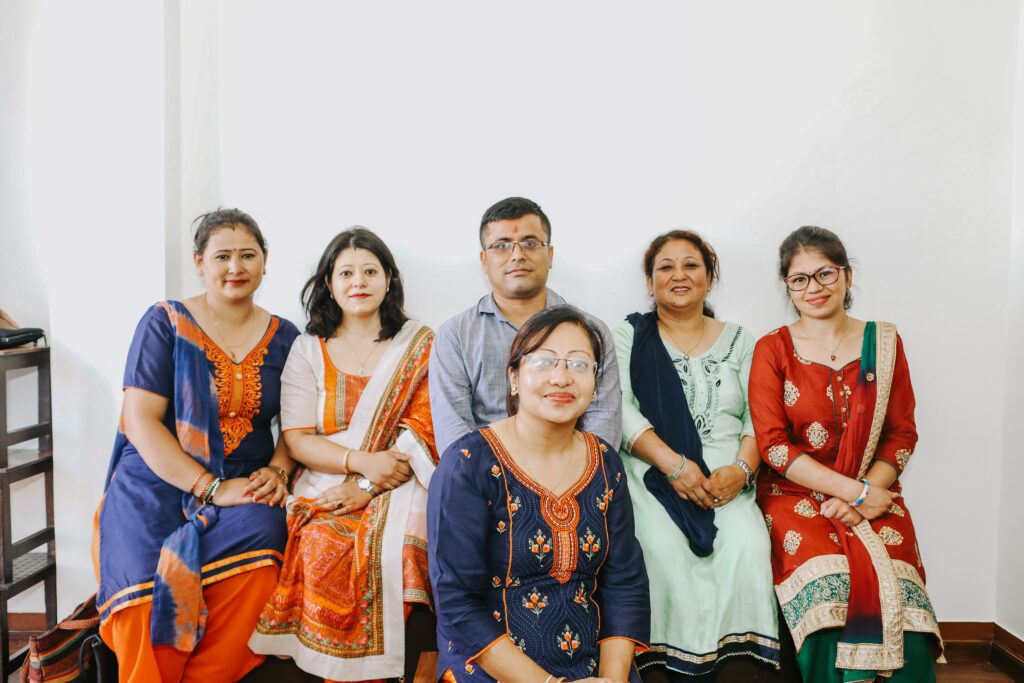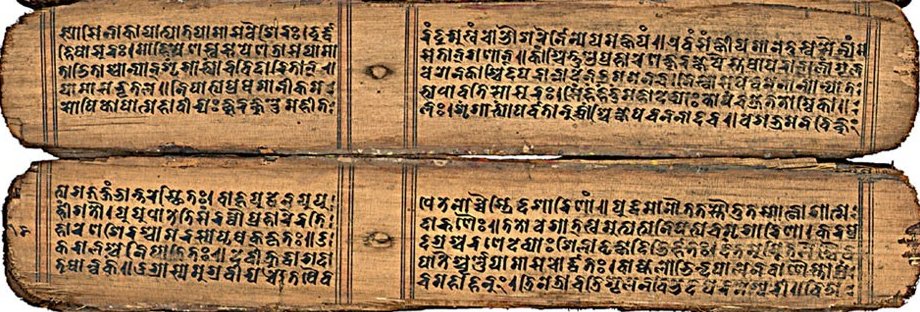
The Bhujimol script, with its graceful, fly-headed curves, stands as the oldest form of Nepalese writing, historically used for both Newar and Sanskrit. Known also as “Hooked Nepālākṣarā” or the “hooked style,” Bhujimol links us directly to Nepal’s ancient literary and cultural legacy. Emerging from the Brahmi script family, it later gave rise to other important scripts such as Ranjana and Pracalit, but its unique beauty and historical significance remain unparalleled.
Today, the Bhujimol script is not just a remnant of history but a vital key to accessing some of the oldest Buddhist texts, many of which are written in Sanskrit. These texts—whether sutric, tantric, or other religious manuscripts—are invaluable sources of wisdom. The preservation and transcription of these manuscripts have become an important mission, one shared by the Asian Legacy Library (ALL) and its esteemed partners at the Nagarjuna Institute of Buddhist Studies (NIBS) in Nepal.
These texts, many written on fragile palm leaves and preserved in the Bhujimol script, represent some of the purest expressions of the Sanskrit Buddhist canon.
Kiran Shakya, a renowned Bhujimol expert and a dedicated scholar, has been instrumental in making these ancient texts accessible to the world. His deep expertise in Bhujimol, along with other old Nepali scripts like Ranjana and Pracalit, allows him to faithfully transcribe these manuscripts into Roman characters, preserving the accuracy of the original texts. These older manuscripts are especially prized for their purity, having been less affected by the scribal errors that accumulated over centuries of copying. Kiran’s skill ensures that the wisdom encoded in these ancient writings remains as intact as possible.

Beyond his work in transcription, Kiran has also taken on the role of teacher. At NIBS, he recently began training new operators in the delicate art of reading and inputting these rare and precious manuscripts. His efforts ensure that future generations will continue to have access to this profound knowledge. Supported by Milan Shakya, the Managing Director of NIBS, these training sessions are being carefully recorded, with the hope of disseminating this knowledge to students and scholars worldwide.
Our partnership with NIBS and Kiran is more than just about preserving texts; it is about revitalizing Nepal’s cultural legacy. Nestled high in the Himalayas, Nepal has been a guardian of countless manuscripts hidden away in monasteries and libraries for centuries. These texts, many written on fragile palm leaves and preserved in the Bhujimol script, represent some of the purest expressions of the Sanskrit Buddhist canon. It is these ancient works that ALL and its partners strive to protect and share with the world.

In collaboration with Kiran, NIBS, and other dedicated scholars, we aim to keep this knowledge alive—not only by training new operators but by ensuring that the sacred teachings within these manuscripts are made available to people around the globe. Through the preservation of the Bhujimol script, we continue to unlock the wisdom of the past, offering timeless insights to future generations. This is what we truly seek to preserve: the pure, unbroken transmission of knowledge, a treasure that is as vital today as it was over two thousand years ago.